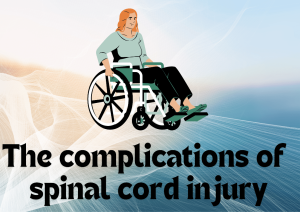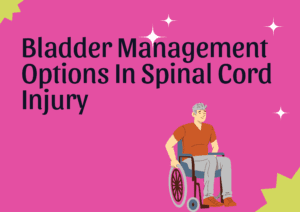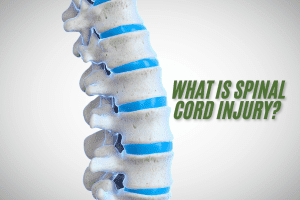
By Scihealthhub – September 21, 2024
Spinal cord injury (SCI) is a life-altering event that affects various aspects of a person’s life, including mobility, health, and, often, life expectancy.
However, advances in medical care, rehabilitation, and assistive technologies have significantly improved survival rates and quality of life for those living with spinal cord injury.
In this article, we will help you understand the impact of spinal cord injury on long-term survival or life expectancy of individuals with spinal cord injury.
Key Statistics On Life Expectancy After Spinal Cord Injury
A good starting point will be to take a look at what data from various studies show regarding life expectancy of individuals living with spinal cord injury.
About 10-20% of individuals who have sustained a spinal cord injury die before they get to the hospital or during the initial hospitalization (2).
For those who survive one year after a spinal cord injury, research show that their life expectancies have continued to increase over the years.
A fifty year investigation into the long-term survival of individuals with spinal cord injury reported that between (1943-1952) and (1983-1990) there was a 71-82% reduction in death rate (4)
Despite these improvements in the life expectancies of individuals living with spinal cord, they still remain lower than that of the general population.
Overall, death rate in people with spinal cord injury is up to three times higher than in the general population (1).
Also, the evidence show that life expectancy for those who survive one year after a spinal cord injury varies widely based on the severity of the injury and the age of the injured (3).
Individuals with paraplegia (injuries affecting the lower limbs) generally have a higher life expectancy than those with tetraplegia (injuries affecting both arms and legs).
Similarly, those who can maintain some degree of physical activity or mobility, even with assistive devices, tend to live longer.
For instance, research show that an individual who was 20 year old at the time of the injury will have a life expectancy of about 36 years if he has a high tetraplegia (C1-C4) or 45 years if he has paraplegia.
On the other hand, an individual who was 60 year old at the of the injury will have a life expectancy of about 8 years if he has a high tetraplegia or 13 years if has paraplegia (2).
What Determines Life Expectancy After Spinal Cord Injury?
Following from the above, some of the key factors that influence life expectancy after spinal cord injury include:
- Level of Injury: The higher the level of spinal cord injury, particularly if it affects the cervical spine, the more severe the impact on bodily functions, such as breathing and heart rate. This can significantly reduce life expectancy compared to injuries lower on the spine.
- Severity of Injury: Complete spinal cord injuries, which result in the total loss of sensation and movement below the injury site, are more life-threatening than incomplete injuries, where some function remains intact.
- Age at Injury: Life expectancy is often reduced for older individuals at the time of injury compared to younger individuals. Younger individuals may have better overall health and a longer time to recover and adapt to life post-injury.
- Secondary Health Conditions: overtime, spinal cord injury puts a person at risk of developing various secondary complications otherwise called secondary health conditions. Common secondary health conditions include respiratory infections, cardiovascular diseases, pressure sores, urinary tract infections, and kidney problems. These issues can lead to chronic illness, increased hospitalization, and death. Managing and preventing these secondary conditions is crucial for improving both quality of life and longevity in spinal cord injury individuals.
The Role Of Medical Advances In Extending Life Expectancy In Spinal Cord Injury
In the past few decades, life expectancy for individuals with spinal cord injury has improved dramatically, thanks to:
- Improved Acute Care: Advances in trauma care have increased survival rates immediately after spinal cord injuries occur. Rapid stabilization, better spinal surgery techniques, and early rehabilitation reduce the long-term impact of injuries.
- Innovations in Assistive Technology: Devices such as ventilators for high-level injuries, mobility aids, and robotic exoskeletons are enabling better quality of life, helping individuals maintain independence and avoid secondary complications.
- Preventative Care and Management: advances in prevention and management strategies for secondary health conditions like pressure sores, urinary tract infections, cardiovascular diseases, and respiratory infections has allowed for better long-term health and improved life expectancy in people with spinal cord injury.
Common Causes Of Mortality In Spinal Cord Injury
Understanding the common causes of death among spinal cord injury patients can help guide prevention and management strategies.
These include:
- Cardiovascular Diseases: Currently, cardiovascular diseases including heart disease and stroke are the leading cause of death among individuals with spinal cord injury (5). The reason is because people living with with spinal cord injury face a higher risk of traditional cardiovascular risk factors like reduced physical activity, obesity, hypertension and high cholesterol levels.
- Respiratory Complications: Individuals with spinal cord injury often experience the problem of increased risk of pneumonia because of reduced ability to clear mucus from the lungs and weakness of the muscles of breathing. Also, individuals with high-level cervical injuries can develop life-threatening respiratory failure due to paralysis of the muscles needed for breathing.
- Sepsis: Pressure sores, urinary tract infections, and pneumonia can lead to severe infections and sepsis, which can be fatal if not properly treated.
- Kidney Disease: Repeated urinary tract infections and reliance on catheters may result in long-term kidney damage, increasing mortality risk over time.
Optimizing Health and Longevity After Spinal Cord Injury
There are several ways individuals with spinal cord injury can maximize their health and potentially extend their life expectancy:
- Effective Self-management: learning about the condition and the skills to self-manage is fundamental to overall health and wellbeing of individuals with spinal cord injury. By taking an active role in their care, individuals can prevent or better manage secondary complications, maintain independence, and improve their life expectancy and quality of life. People with spinal cord injury can learn self-management skills through various methods and resources including their healthcare providers, online learning platforms like scihealthhub.com and Christopher & Dana Reeve Foundation and connecting with support groups.
- Proper Management of Secondary Health Conditions: early interventions to prevent and manage possible secondary health conditions can greatly improve life expectancy and quality of life in people with spinal cord injury.
- Regular Medical Checkups: Frequent monitoring by healthcare professionals will enable early detection and management of secondary health conditions. For example, regular check ups can help identify risk factors for cardiovascular diseases like hypertension, diabetes and high cholesterol levels.
- Lifestyle Changes: A healthy diet, weight management, and proper hydration can help prevent complications like pressure sores and urinary infections. Healthy lifestyle choices also reduce the risk of heart disease.
- Exercise and Rehabilitation: Regular physical therapy and exercises adapted to the individual’s level of mobility can improve cardiovascular health, strengthen muscles, and prevent complications such as osteoporosis.
- Mental Health Support: Managing the emotional and psychological impact of spinal cord injury is equally important. Depression and stress can worsen physical health outcomes, so seeking mental health support is crucial.
In conclusion, while spinal cord injuries undoubtedly affect life expectancy, the outlook is far more positive than it once was. With advances in medical technology, preventative care, and better overall management, individuals with spinal cord injuries are living longer, healthier lives than ever before.
If you enjoyed this post, please press the subscribe button, share the article and follow our social media handles.







Well written article,kudos👍